Facts about Qingdao: sailing, strolling, reminiscing
Writer: Wang Haolan | Editor: Holly Wang | From: Shenzhen Daily | Updated: 2020-07-13
It has been widely acknowledged by the locals that the best three things to do during summertime in Qingdao, the biggest city in Shandong Province and one of the most picturesque coastal cities in China, are drinking beer, eating clams and bathing in the sea.
However, as social distancing and masks are still in place nationwide during the post-COVID-19 period, the city still has a variety of public destinations that can make your trip end up with a full camera storage card and a large collection of travel notes.
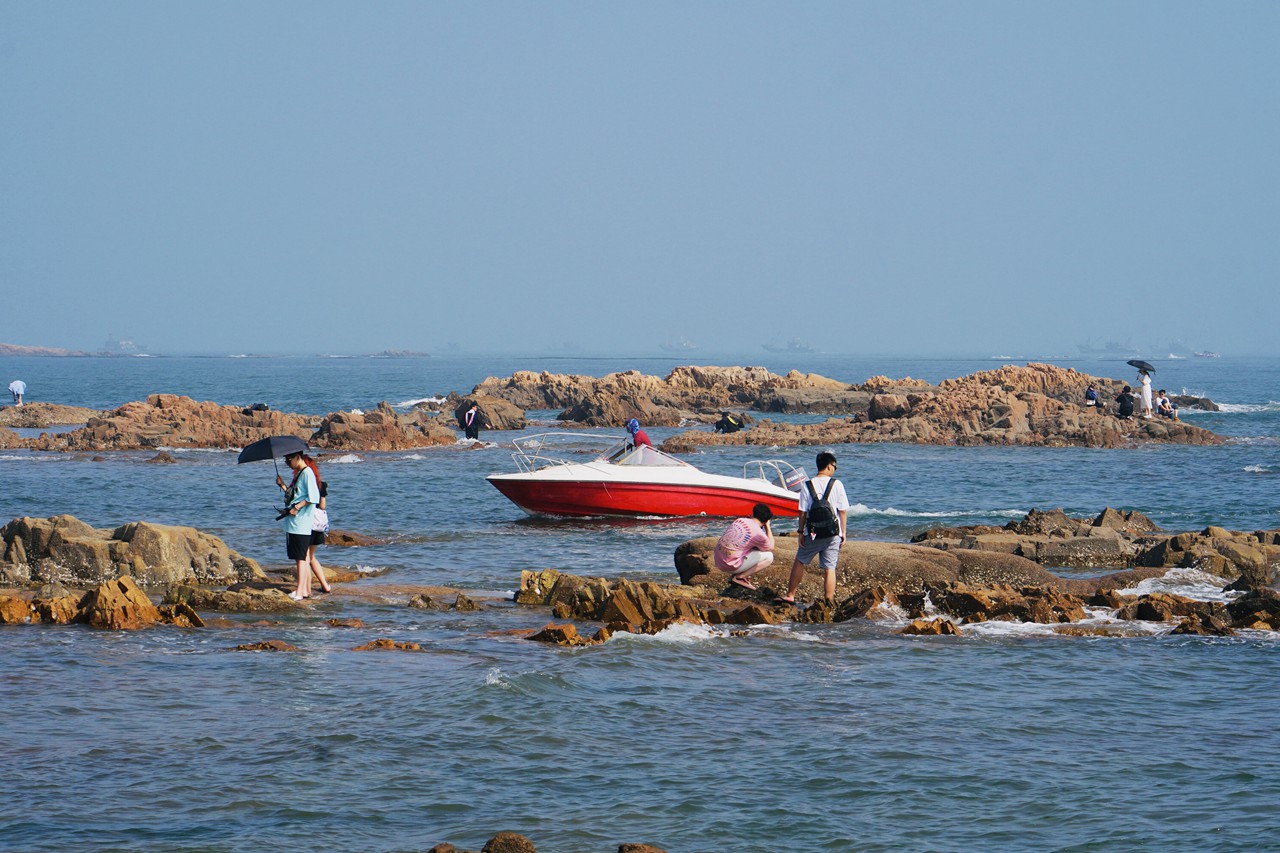
A speedboat cruises the water at Qingdao No.2 Bathing Beach. Photos by Wang Haolan
Find déjà vu in Badaguan (八大关)
Exit C of the Zhongshan Park Station on Qingdao Metro Line 3, which is the nearest exit to the Badaguan Scenic Area, hides behind a winding path sheltered by trees and bushes. A few hundred meters from the exit stands a stone anaglyph of a saintess and a tranquil slope with red brick fences built on both sides, giving you a déjà vu feeling of visiting Wukang Road in Shanghai or even Notting Hill in London.
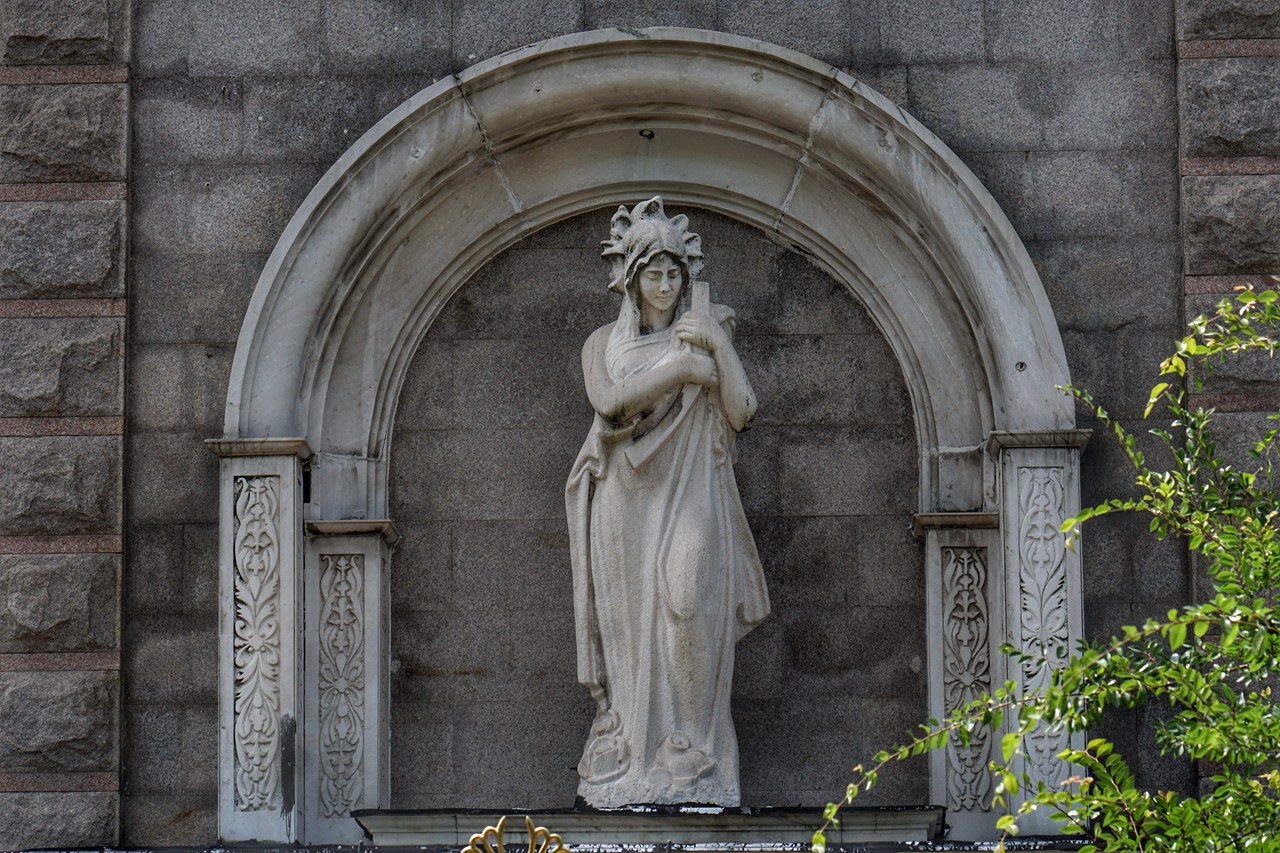
A stone anaglyph of a Western saintess.
Badaguan is credited in 2005 with being one of the most beautiful Chinese communities. It has a checkerboard-like road system containing 10 main roads, among which eight are named after eight famous ancient mountain passes in China.
Centenarian villas in Gothic, Russian, Greek, and Nordic styles are omnipresent at Badaguan, as most of them were built between the German concession period of 1897-1914 and the 1930s.
At the southbound end of Ningwuguan Road lies the Qingdao No. 2 Bathing Beach — a nice summer getaway with a panoramic view of the city’s coastline and the Yellow Sea. Looking out from the levee of the beach, a cylindrical stone observatory erected on an elevated cape will capture your gaze.
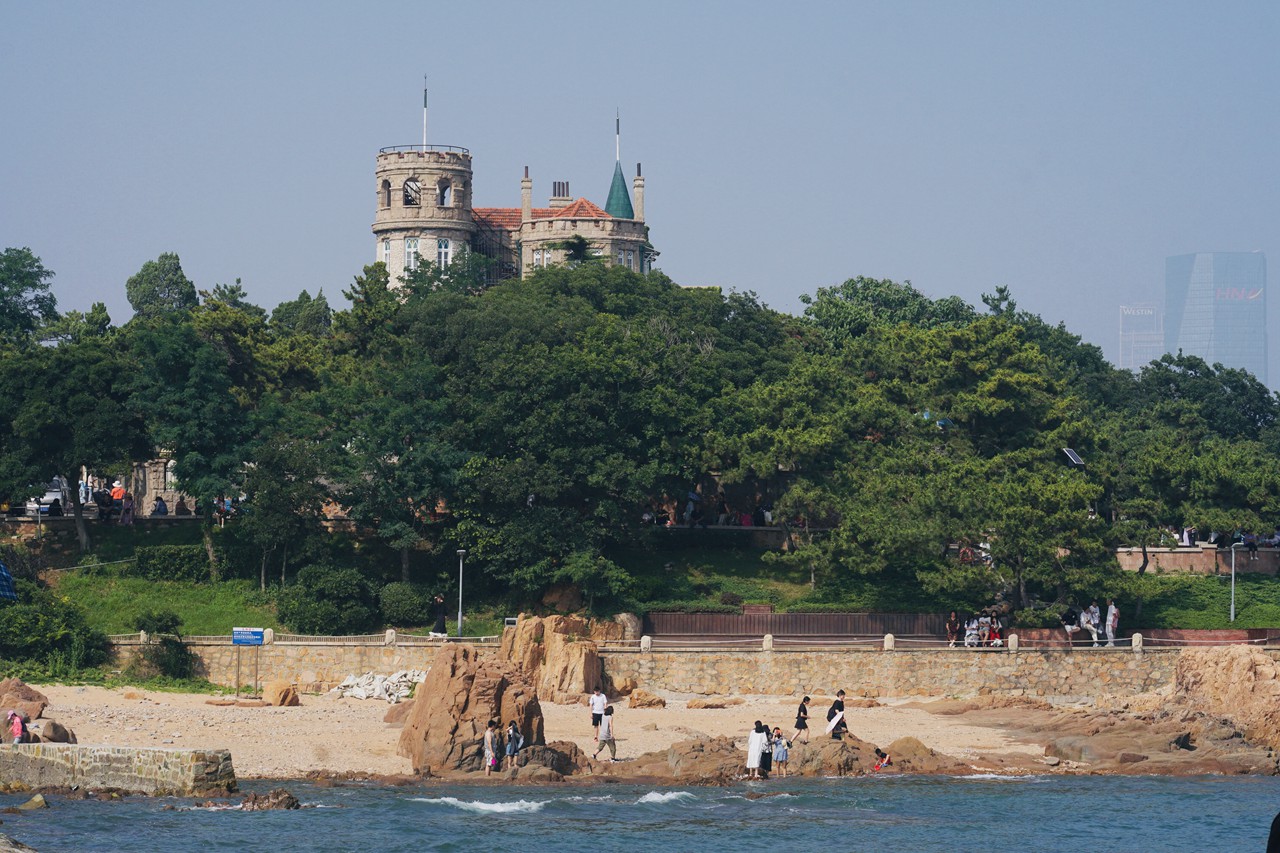
A view of the Huashi Building captured from the levee of Qingdao No.2 Bathing Beach.
The castle-like structure, whose architectural style resembles a tower of the Neuschwanstein Castle in Germany, is a part of the Huashi Building, which is the most characteristically European-style signature villa in Badaguan. The five-story building is said to be built by German people in 1903 and once served as a local accommodation for visiting dignitaries. It has a small back garden dotted with figurines, sculptures, pavilions, and Greek style pillars.

Huashi Building, the most characteristically European-style signature villa in Badaguan.
On the quiet crossing of Zhengyangguan Road, a Danish style villa named Princess Building is a standout among the neighborhoods of bricks and stone with its pointy roof and turquoise, wooden-framed facades.
Designed by Russian architect Vladimir Georg Yourieff (1905-1999), the building is said to have been the residence of the visiting Danish prince and princess in 1930s based on unproven hearsay. It has interior designs featuring a Nordic style and a back garden equipped with benches and sculptures.
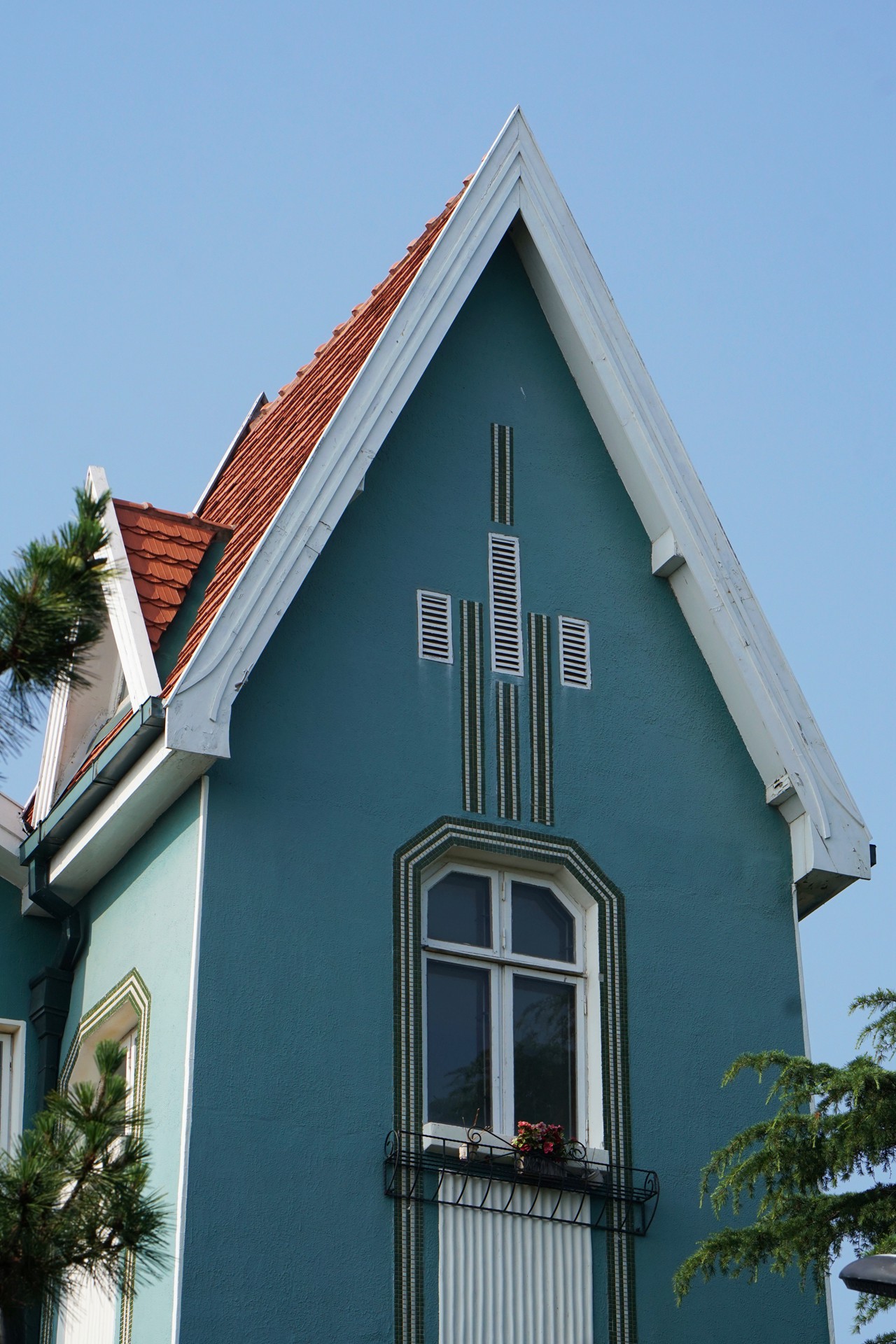
A view of Princess Building at Badaguan.
Add: 10 Wushengguan Road Branch, Shinan District, Qingdao, Shangdong (山东省青岛市市南区武胜关支路10号)
Tickets: 8.5 yuan (US$1.2) per person for Huashi Building, 20 yuan per person for Princess Building
Sail, sail, sail a boat at Olympic Sailing Center
Fushan Bay, where the Qingdao Olympic Sailing Center lies, is within a kilometer’s reach from the heart of the city’s downtown area. Standing at the promenade, you will be fully embraced by the glamourous skyline made up of the sea view, sailboats, flag posts, lighthouses, a sea-shell shaped convention center, and a collection of Olympics-related landmarks.
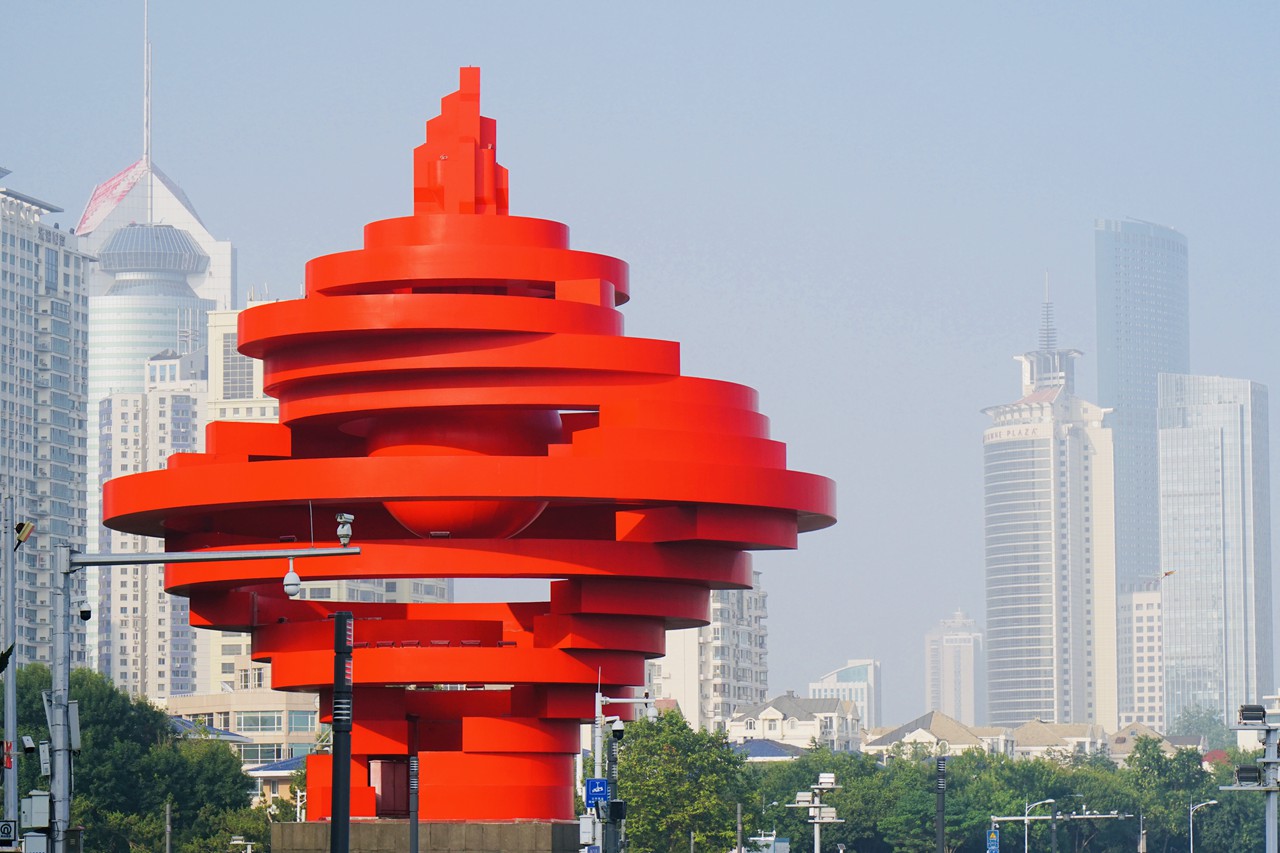
The “May Wind” statue on May 4th Square.
The center was built to host the regattas of the Beijing Olympic and Paralympic Games. A giant statue of the Olympic torch is erected on the passenger pier of the center, reminding all visitors of the summer in 2008.
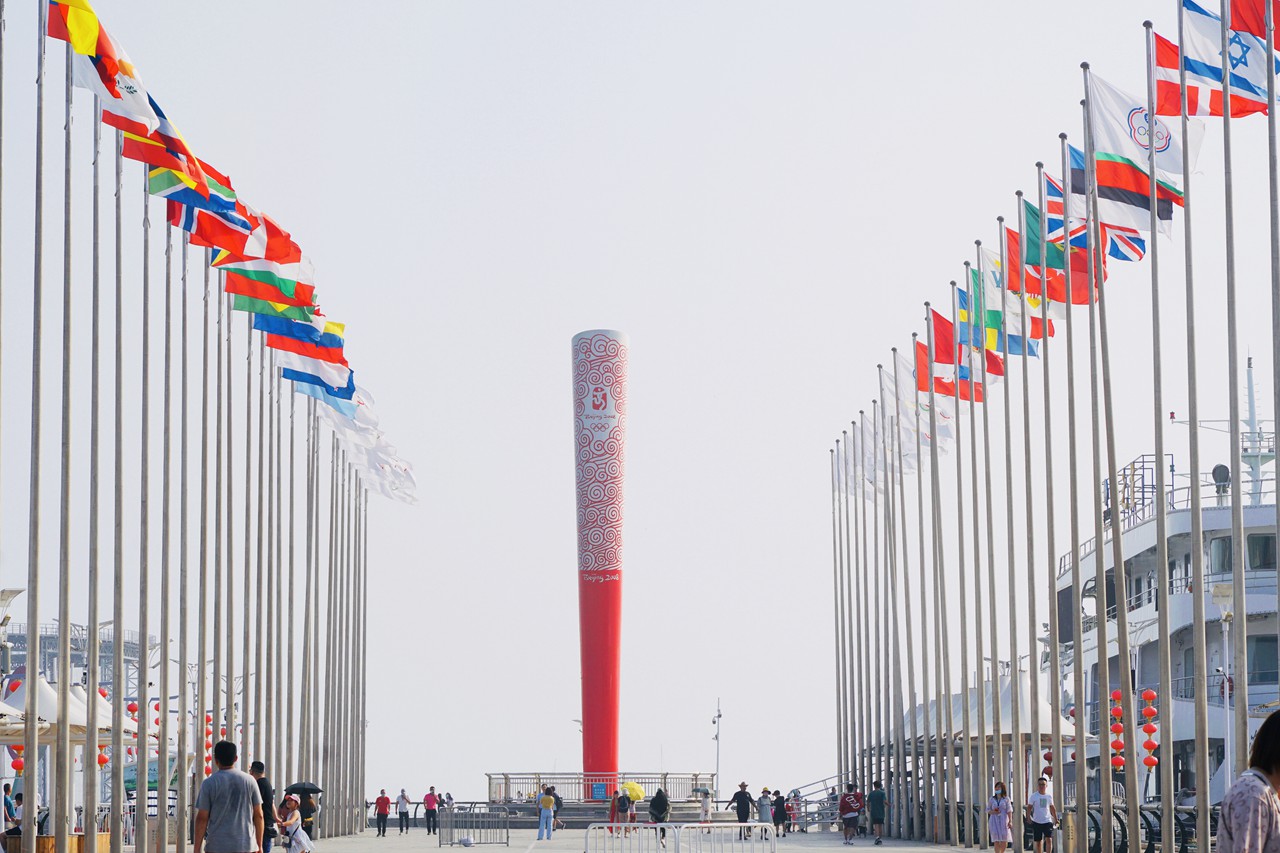
A giant sculpture of the torch of Beijing Olympic Games is seen at Qingdao Olympic Sailing Center
When dusk approaches, you can hop on a vaporetto, or book a speedboat or catamaran to tour the bay in the company of seagulls and appreciate the city’s daily light show.
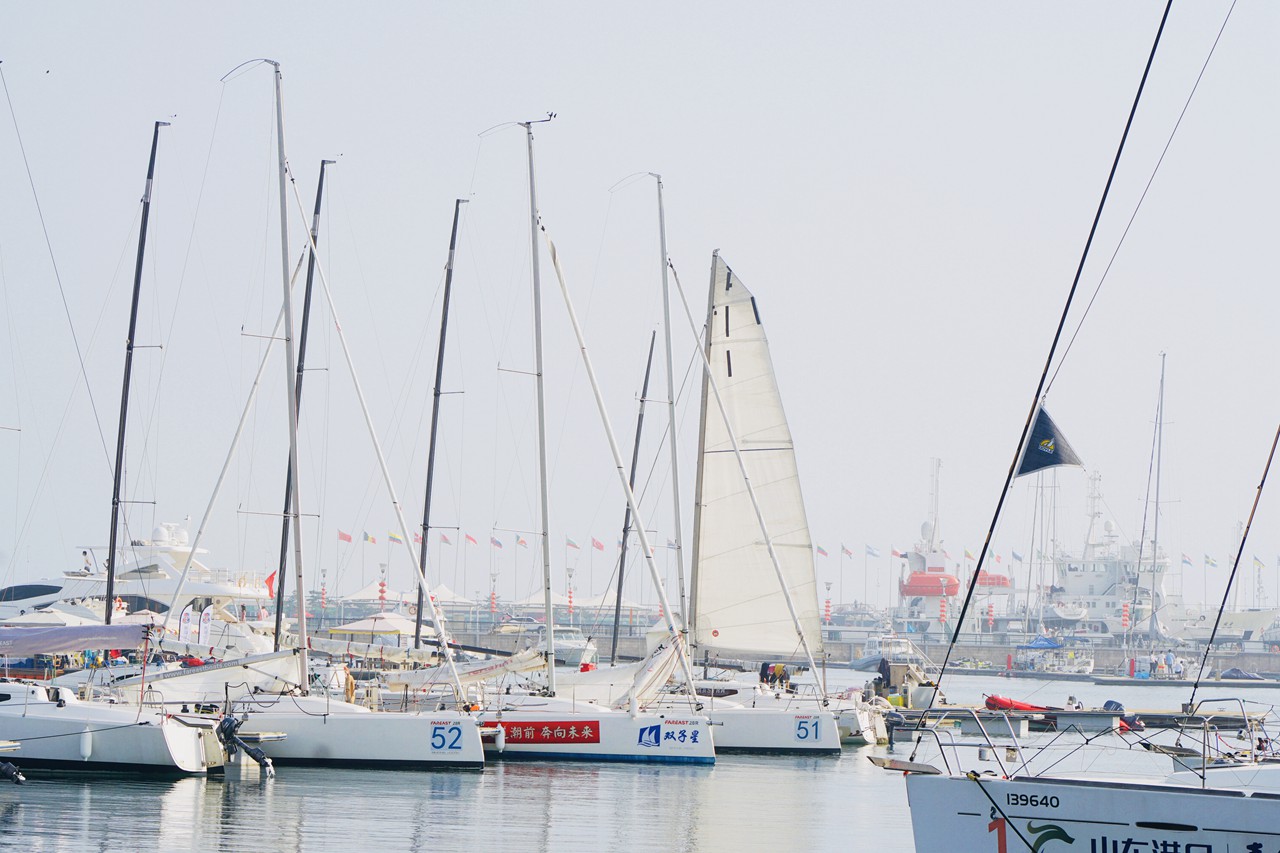
Sailboats are seen at the pier of Qingdao Olympic Sailing Center.
Add: 12 Xinhui Road, Shinan District, Qingdao, Shangdong (山东省青岛市市南区新会路12号)
Free entry
Pay tribute to tradtions in Laoshan Mountains
Located in the east-most district in Qingdao, Laoshan Mountain has the highest peak among coastal cities in China and is known for its spectacular mountainous and coastal views, its Taoism traditions, and the renowned herbal sparkling water brand which carries its name.
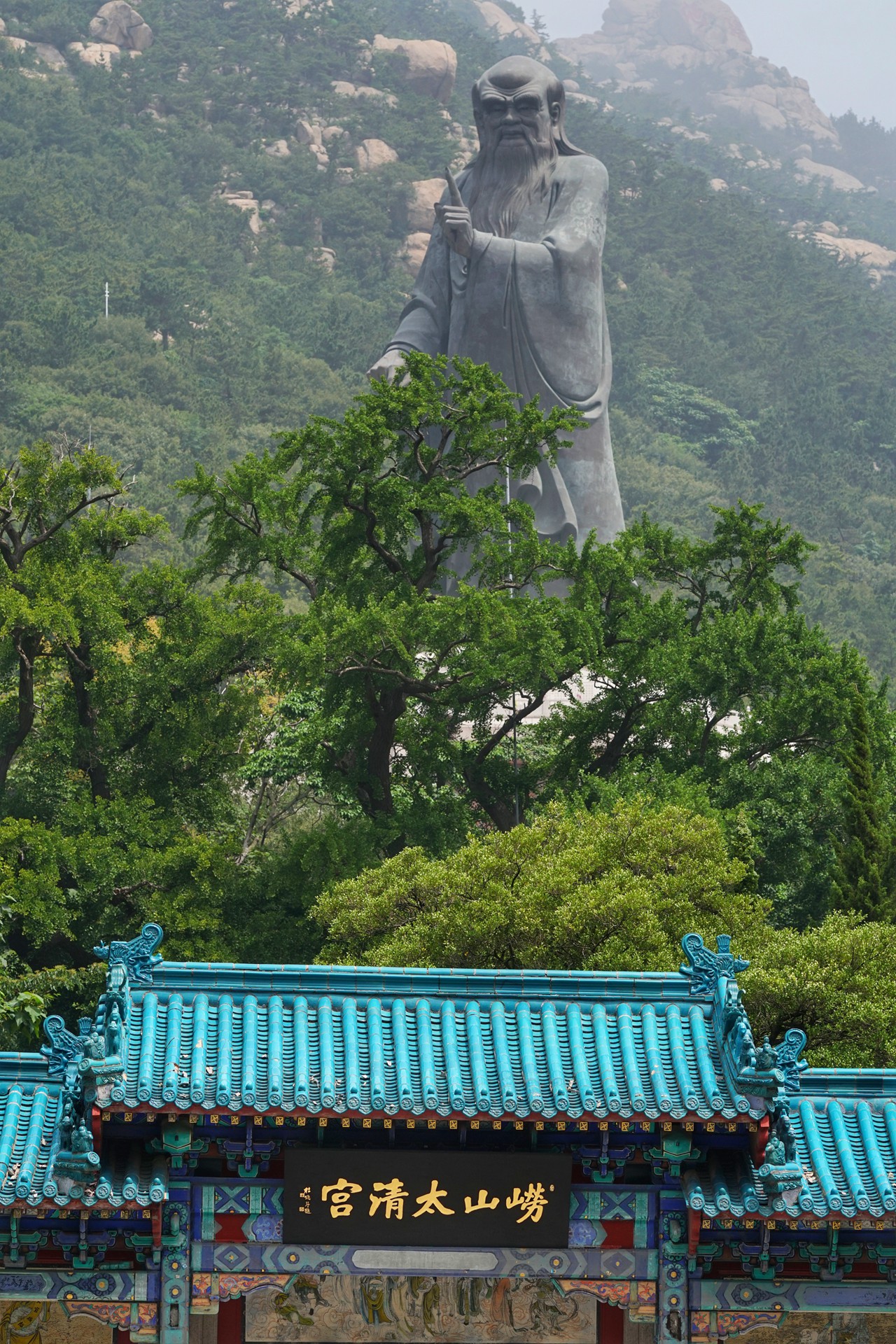
The Taiqing Palace in Laoshan has the world’s largest bronze statue of Chinese sage Laozi.
The scenic area has three recommended travel routes catering to travelers with different needs. If you are interested in Chinese culture and don’t feel like hiking too much, just embark on the southern route to take a stroll along the seafront walkway and visit Taiqing Palace, one of the most famous Taoist buildings in China.
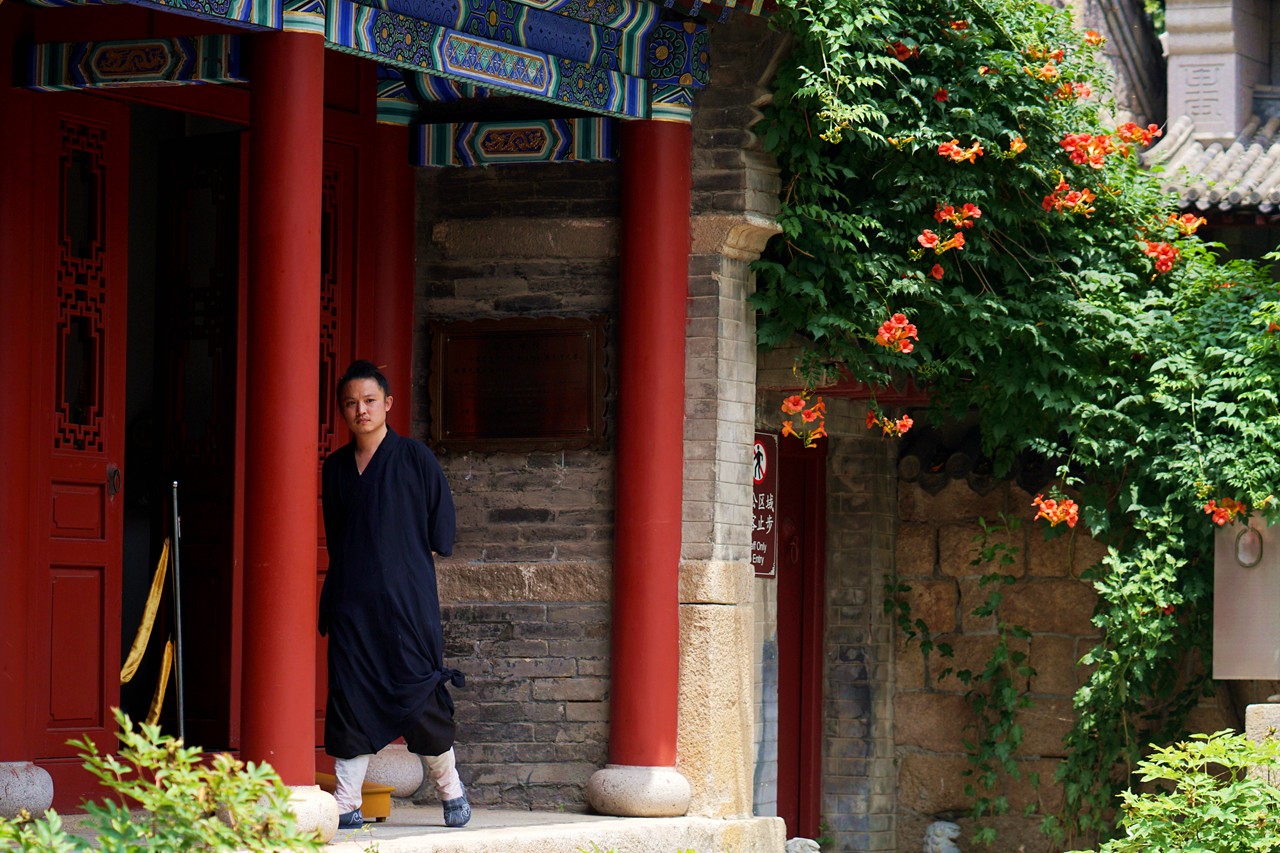
A Taoist is seen at Taiqing Palace.
The initial structure of Taiqing Palace was built in 140 B.C. and has undergone continuous renovations and repair over the centuries. Its current building style and layout were established during the Song Dynasty (960-1279).
Add: Laoshan District, Qingdao, Shandong (山东省青岛市崂山区)
Tickets: 210 yuan/person from April 1-Dec. 31, 140 yuan each from Jan. 1-March 31